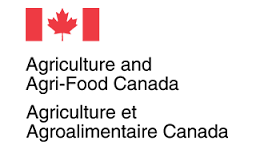Source: Agriculture and Agri-Food Canada
Ask some prairie feedlot operators, and they will tell you that providing bedding material for cattle during the winter months comes with several benefits – both to livestock and to the pocketbook.
Barley straw has traditionally been the preferred choice for bedding; however, since the 1990s, wood chips have gained in popularity and give feedlot operators another option in drought years when barley straw supplies may be more limited.
Observing this increase in the use of wood chip bedding materials, and knowing that the manure and bedding materials from livestock pens are periodically removed and applied on nearby land, Dr. Jim Miller and his colleagues at Agriculture and Agri-Food Canada’s (AAFC) Lethbridge Research Centre were interested in learning more about the potential long-term effects of land-applied wood chip bedding materials on the quality of agricultural crops, soil, air and water.
“Little was known about how bedding material type (barley straw versus wood chips) in applied manure could affect the downward movement of nutrients.”
– Dr. Jim Miller, Research Scientist, AAFC, Lethbridge, Alberta
As a result, two research projects spanning a thirteen-year period were undertaken to determine if wood chip bedding materials incorporated in applied manure could affect nutrient loss.
“Nutrients from manure can move down below the root zone, increasing the risk of groundwater and surface contamination. And high nitrate-nitrogen levels can cause human and livestock health concerns, whereas high phosphorus levels can lead to eutrophication of lakes and rivers,” Dr. Miller explains. (Eutrophication is a process whereby water bodies receive excess nutrients that stimulate excess plant growth, usually resulting in the depletion of dissolved oxygen).
The study found that soils amended with manure containing wood chips have less potential for downward leaching of nitrate, organic carbon and other chemicals. Therefore, there may be certain environmental benefits that producers can gain by using wood chips rather than barley straw as winter bedding material. Dr. Miller and his AAFC colleagues will continue to share their findings as new results come to light.
Highlights
- A 13-year study found that soils amended with manure containing wood chips have less potential for downward leaching of nitrate, organic carbon and other chemicals.
- AAFC scientists are learning more about the potential long-term effects of land-applied wood chip bedding materials on the quality of agricultural crops, soil, air and water.
- Wood chips may offer certain environmental benefits as a winter bedding material and other research suggests that wood chips may also offer certain economic advantages, such as keeping cattle cleaner in feedlot pens.









